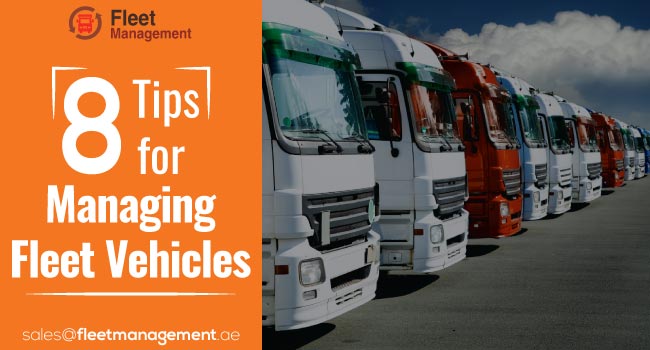There are no governmental regulations in trucking with pets as long as it does not hamper safe driving. But not all transport companies allow pets on board.
Once the driver finds an employer who has no objection to him trucking with a pet, he has to know the regulations and the details on pet care and comfort.
A driver’s career may seem rewarding but nothing can compensate for the long hours on the road. The feeling of loneliness and the boredom that sets in on the usual commutes can be trying.
Read Also: 15 Tips to Prevent Drowsy Driving [This List Could Save Your Life]
Many of the drivers opt for the companionship of their pets on long drives. It keeps them focused and alert on the roads. Drivers who travel with pets are found to be happier and mentally fit.
Choice of a Pet
Dogs, cats and other domesticated pets can be a travelling companion. Trucking companies stipulate a weight limit of 25-30lbs. Most of the carriers require a pet deposit ranging from $200 to $600. This depends on the type, breed, size and weight of the animal. Exotic animals are more often not allowed.

The deposit and other fees cover cleaning or repair of the truck due to damages, if any, caused by the pet.
A smaller dog with less fur would be ideal. Older and lazy dogs perfectly fit the bill as they are more manageable. The dogs have to sit for long hours within a confined space. Hence an over-active dog may not be an ideal companion.
Documentation
Drivers have to be responsible for the health of the pet and check whether they are comfortable. Periodic veterinary check-ups are a must.
The Certificate of Veterinary Inspection (CVI) or any appropriate health certificate for the states travelling through and rabies vaccination proofs have to be in order.
To prevent the spread of communicable diseases among animals, states require a CVI for animals being transported across state borders. The CVI states that the animal is healthy and not diseased. The CVI must be issued by the vet in the home state within 30 days before travel.
Pet Proof Arrangements
Barriers have to be created in the cabin where the driver does want the pet to access like the pedals. Leaving this area open would be distracting and prove dangerous.
Food, medicine and garbage have to be stored out of reach of the pet, possibly in compartments. Care has to be taken to prevent pets from jumping out of open windows.
The pets have to be trained as to where they can move in the cabin. Pets travelling in the front seat have to be belted.
The pet’s safety and comfort has to be ensured while leaving them alone in the truck during winters and summers.
Plan Stops
Breaks have to be given to the pets for their toilet functions, exercise and play. At each stop, the pets have to be taken for short walks allowing them to stretch their limbs and exercise. A few toys in the cabin will keep them occupied while on the road.
Read Also: Healthy Habits for Truck Drivers
Truck stops will generally allow pets on their property. They will have a grassy area where the pets can be walked. Highway rest stops are mostly pet friendly.
Pet Care
Food, water and health care are a priority in pet care. Drivers have to carry an ample supply of fresh food and water for pets. Fresh food will help avoid digestive disorders. The food and water supplies should be enough to last the whole trip including weather delays or breakdowns.

Pets have to be given plenty of water on these long rides. It is best to carry plenty of drinking water from the home town. Availability and quality of water vary from place to place. Contaminated water would be unsafe for pets.
A box or a pet crate with comfortable bedding will provide the pet with a warm and safe place. The box can be tethered to a suitable place in the cabin.
Drivers have to carry a harness or leash to keep the pet close to them when they leave the vehicle at stops. Restraint is required as a frequent traveler pet, familiar with the surroundings, might suddenly decide to run on its own. A collar with owner details is a must.
The driver should purchase a pet health insurance policy to cover any emergencies that may arise. Locating and listing pet care facilities and vet supplies centers along the route before the trip, would be ideal. Any supply required can be purchased on the go.
It is recommended that the driver carry a supply of basic preventive medication for minor disorders anticipated.
Mental stimulation will keep the pets healthy and physically fit. Handing out toys in rotation will keep the pet entertained while on the road. Chewable toys are mostly preferred by dogs. Scratch pads would be interesting to cats.
It would be advisable that the driver keeps an extra key with him when he leaves the pet inside the truck. This will come in handy when the pet tamper with the door lock buttons.
A supply of extra cleaning materials and air fresheners will come in handy. Cat litter has to be emptied as often possible. Scented plastic bags, scoops are a must when travelling with cats.
Driver Awareness
Whatever precautions taken and preparations made, the driver has to be prepared to face emergencies. Unexpected expenses might crop up.
The pet might behave differently from normal due to the long hours spent in confined spaces. Drivers have to be perfectly sure of their pet’s ability to enjoy and take the long drive comfortably.
Effects of Trucking With a Pet
Drivers feel secure when travelling with a pet. Some animals pose a threat to intruders and some others alert the drivers to dangers.
Drivers travelling with pets contend that they are calm when in traffic delays and faced with obstructions on the road.
Read Also: 10 Common Truck Driver Health Issues and Solutions
The excessive sitting behind the wheels causes an increase in the blood pressure levels and cardiovascular disorders in drivers. Drivers trucking with pets are normally found to have a healthy heart.


















![16 Frustrating Problems Faced By Drivers on a Trip [Inc: solutions]](https://wp.fleetmanagement.ae/wp-content/uploads/2019/09/16-frustrating-problems-faced-by-drivers-on-a-trip-3-1.jpg)











